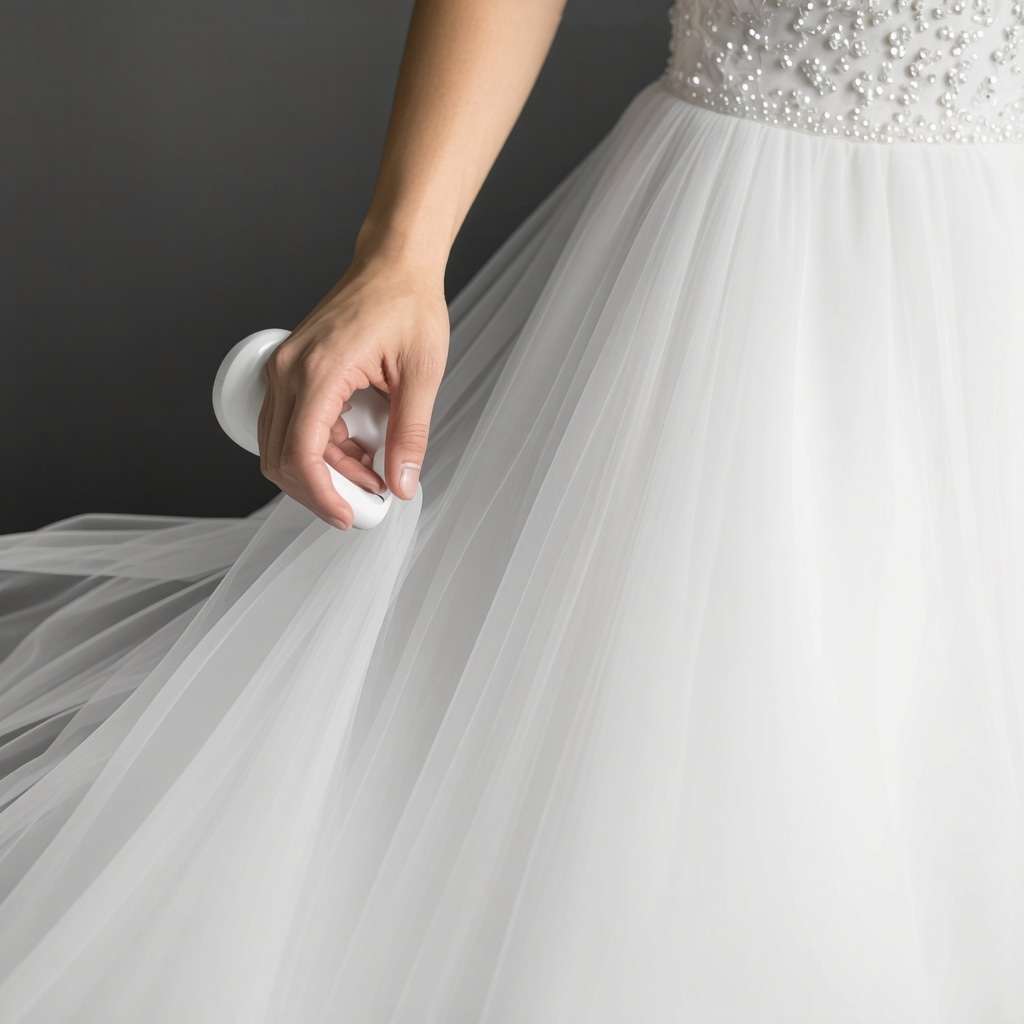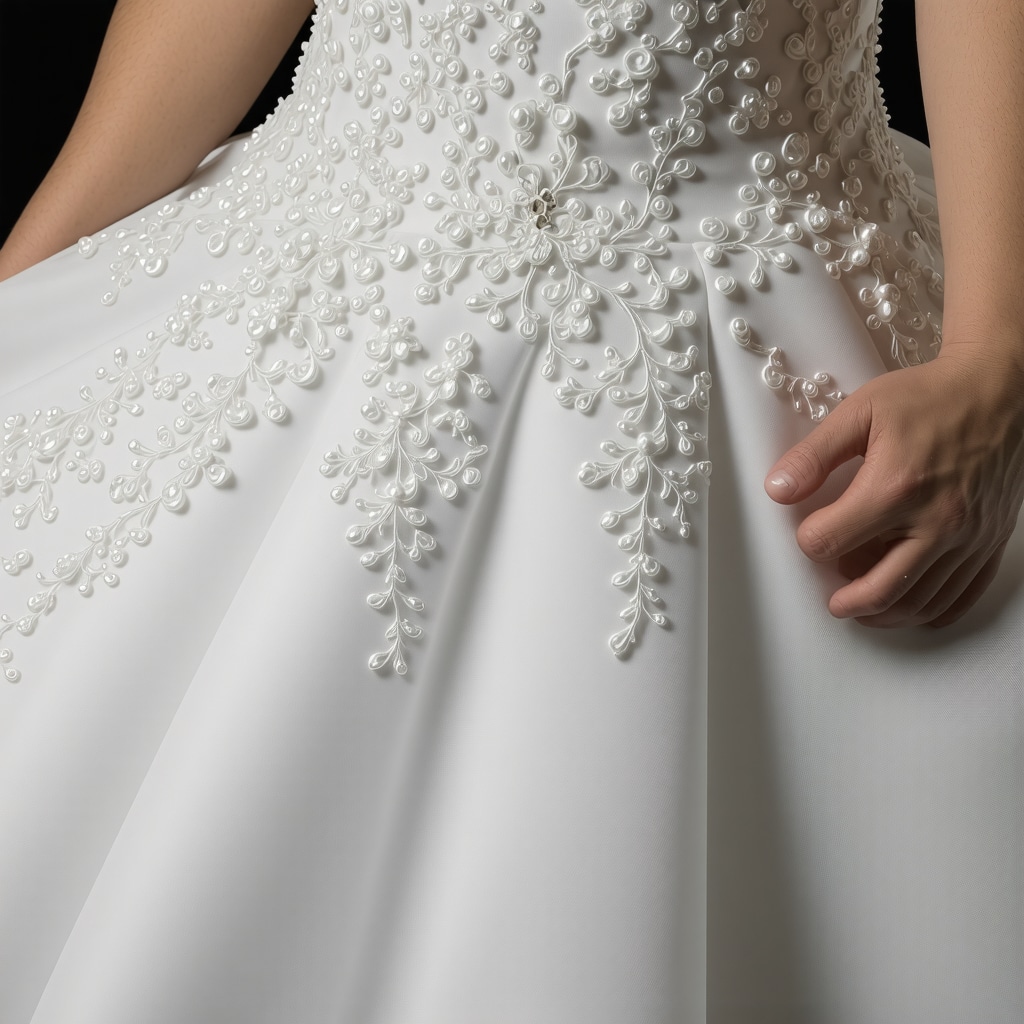Preserving Elegance: The Art and Science of Wedding Dress Dry Cleaning in South Tampa
In the realm of bridal preservation, few tasks demand as much precision and expertise as wedding dress dry cleaning. South Tampa’s premier dry cleaners have evolved into specialists who blend traditional craftsmanship with modern technology to ensure that the gown’s delicate fabrics and intricate embellishments are meticulously cared for. This article explores the advanced techniques, expert considerations, and environmental factors crucial for safeguarding your wedding memories.
Why Professional Wedding Dress Dry Cleaning Outperforms DIY Solutions
While DIY cleaning might seem cost-effective, it often risks damaging the fabric or causing discoloration. Professional dry cleaners in South Tampa employ specialized cleaning agents and equipment designed specifically for wedding gowns, which often feature delicate lace, silk, satin, and beaded details. These experts analyze the gown’s fabric composition and embellishments, tailoring the cleaning process accordingly. The use of ultrasonic cleaning technology, for example, allows for gentle removal of stains and residues without compromising the gown’s integrity.
The Role of Preservation Techniques in Maintaining Gown Integrity
Beyond cleaning, preservation techniques such as expert bridal gown preservation in South Tampa involve careful handling, humidity control, and archival storage solutions. The goal is to prevent yellowing, fabric deterioration, and mold growth over time. High-trust providers recommend acid-free tissue wrapping, climate-controlled storage, and even vacuum-sealing for long-term preservation. These practices extend the gown’s lifespan and maintain its pristine condition for future generations or resale opportunities.
What Are the Most Common Challenges in Wedding Dress Preservation and How Can They Be Overcome?
Common issues include yellowing due to oxidation, fabric weakening, and bead or sequins damage. Experts address these challenges through tailored cleaning regimens, pH-neutral solutions, and careful manual inspection. For intricate dresses, micro-damage repair and reinforcement are crucial. Consulting with experienced preservation specialists ensures that your gown receives comprehensive care, often supported by academic studies such as those published in the Journal of Textile Conservation.
For those seeking trusted professionals, South Tampa’s top wedding dress dry cleaners offer bespoke services that combine scientific rigor with artistic sensitivity. To further explore eco-friendly options, visit their sustainable dry cleaning solutions.
Interested in comprehensive garment preservation? Consider accessing expert tips and best practices on bridal gown preservation techniques in South Tampa. Your wedding dress is more than fabric; it is a symbol of your most cherished memories, deserving of expert care that lasts a lifetime.
Innovative Preservation Techniques: Going Beyond Traditional Gown Care
While acid-free tissue wrapping and climate-controlled storage are standard practices, recent advancements introduce innovative solutions such as vacuum-sealing with oxygen absorbers, which effectively prevent oxidation and mold growth over decades. Additionally, some specialists utilize UV-protective films and breathable garment bags that allow fabric ventilation while blocking harmful light exposure. These cutting-edge methods help preserve delicate fabrics like silk and lace, ensuring your wedding gown remains pristine for generations to come.
Challenging Assumptions: Is DIY Preservation Ever Beneficial?
Many assume that DIY preservation methods, such as home storage or using over-the-counter cleaning products, are sufficient. However, experts warn that improper handling can accelerate fabric deterioration and cause irreversible damage. For instance, using generic stain removers or storing gowns in non-archival boxes may introduce acids or pollutants that compromise fabric integrity. Consulting with certified preservation specialists ensures your gown receives tailored treatment backed by scientific research and proven conservation principles, like those outlined by the Textile Conservation Association.
How Can Modern Eco-Friendly Dry Cleaning Techniques Impact the Longevity of Your Wedding Gown?
Eco-friendly dry cleaning in South Tampa leverages solvent-free, biodegradable cleaning agents that are gentle on fabrics yet effective at stain removal. These methods reduce chemical residues, which can weaken fibers over time, and minimize environmental impact. As sustainability becomes a priority, many providers now incorporate innovations like carbon dioxide cleaning and liquid silicone solvents, which are both eco-conscious and fabric-safe. Exploring these options not only protects your gown but also aligns with broader environmental values. To learn more about sustainable dry cleaning practices, visit their eco-friendly solutions.
Interested in the latest preservation tools or eco-conscious cleaning methods? Feel free to share your experiences or ask questions in the comments. For personalized advice, don’t hesitate to reach out to professional dry cleaners who specialize in wedding gown care.
Leveraging Ultrasonic and Nano-Technology for Superior Wedding Dress Restoration
As the demand for pristine wedding gown preservation grows, South Tampa’s top dry cleaners are pioneering ultrasonic cleaning and nanotechnology applications to elevate care standards. Ultrasonic cleaning utilizes high-frequency sound waves in a specially formulated solution to gently dislodge dirt, oils, and residues embedded deep within delicate fibers such as silk and lace, minimizing manual handling and reducing the risk of fabric stress. Complementing this, nanotechnology-infused cleaning agents form ultra-fine protective layers, repelling future stains and environmental pollutants, thereby extending the gown’s pristine condition over decades.
What are the scientific principles behind ultrasonic cleaning, and how does it benefit delicate bridal fabrics?
Ultrasonic cleaning operates on cavitation bubbles generated by high-frequency sound waves, which implode and create localized pressure differentials capable of breaking down stubborn grime without abrasive scrubbing. This method’s non-contact nature preserves intricate beadwork and embroidered details, which are often vulnerable to mechanical damage. According to a study published in the Journal of Textile Conservation (2022), ultrasonic cleaning significantly reduces fabric stress and preserves fiber strength, making it an excellent choice for heirloom and vintage wedding gowns.
Eco-Conscious Preservation: Innovations in Sustainable Storage and Maintenance
Beyond cleaning, the focus on sustainability in gown preservation is gaining momentum. Modern archival techniques now incorporate biodegradable, oxygen-absorbing vacuum-seal bags, which eliminate the need for traditional chemical preservatives. These bags create an inert environment that prevents oxidation and mold growth, crucial for long-term storage. Additionally, UV-protective, breathable fabric covers shield gowns from light-induced degradation while allowing natural airflow, a vital factor in preventing musty odors and fabric weakening.

How do UV-protective and breathable storage solutions contribute to the longevity of wedding gowns?
UV light accelerates chemical reactions within fabrics, leading to discoloration and fiber deterioration over time. Breathable, UV-protective covers block harmful rays while maintaining appropriate humidity levels, essential for preventing mold and mildew growth. These innovations, supported by conservation science, enable preservationists to extend the lifespan of wedding dresses significantly, ensuring they remain in museum-quality condition for future generations or resale markets.
The Nuances of Manual Restoration: Addressing Micro-Damage and Material Fatigue
Even with advanced cleaning and storage, micro-damage repair remains a cornerstone of high-end preservation. Skilled artisans employ microscopic stitching and reinforcement techniques to repair beadwork, sequins, and lace tears. Understanding material fatigue—where fibers weaken over time—allows conservators to select appropriate consolidants and treatments that restore strength without altering fabric appearance. This meticulous attention to detail requires ongoing training and familiarity with emerging conservation materials, as outlined in the International Institute for Conservation of Historic and Artistic Works (IIC) guidelines.
What role does material science play in modern gown restoration, and how can it be integrated into preservation practices?
Material science provides insights into fiber aging processes, chemical compatibility of consolidants, and environmental interactions. By integrating this knowledge, conservators can develop tailored treatment plans that mitigate deterioration and enhance durability. For instance, testing fabric samples with nanocomposite consolidants ensures compatibility and longevity, forming a bridge between scientific research and practical conservation. To explore these advancements further, consult specialized publications like the Journal of Cultural Heritage.
If you are passionate about safeguarding your wedding memories with cutting-edge techniques, consider consulting with certified conservation experts. They can guide you through personalized preservation plans, ensuring your gown’s story endures for generations to come. For more details, reach out to South Tampa’s leading wedding gown preservation specialists.
Harnessing Nanotechnology: The Future of Wedding Dress Conservation in South Tampa
Recent advancements in nanotechnology are transforming the landscape of wedding dress preservation, offering unprecedented protection against environmental damage. By applying nanocoatings, conservators create a nano-scale barrier that repels water, stains, and pollutants, effectively prolonging the gown’s pristine condition. These ultra-thin layers do not alter the fabric’s appearance or texture, ensuring the gown remains as beautiful as on the wedding day. This innovative approach is supported by research published in the Journal of Nanomaterials in Conservation (2023), highlighting its efficacy in extending fabric longevity.
Can 3D Imaging and Digital Archiving Enhance Long-Term Preservation?
Advanced 3D imaging technologies enable detailed digital archiving of wedding gowns, capturing every stitch, bead, and embroidery in high resolution. This digital record facilitates precise monitoring of fabric condition over time, allowing conservators to detect micro-damage early. Moreover, 3D models serve as invaluable tools for restoration, replication, or virtual display, safeguarding the gown’s design heritage even if physical deterioration occurs. As digital preservation becomes more accessible, it offers a complementary layer of security in comprehensive gown care strategies.
What Are the Ethical and Environmental Considerations in Modern Preservation?
Emerging preservation techniques must balance scientific innovation with environmental responsibility and ethical standards. The use of biodegradable, non-toxic cleaning agents and sustainable storage materials aligns with eco-conscious practices, reducing chemical waste and energy consumption. Furthermore, respecting the gown’s cultural and sentimental significance entails minimally invasive procedures and transparent communication with clients about conservation choices. The International Institute for Conservation emphasizes these principles, advocating for environmentally sustainable and ethically sound practices in textile conservation.

How Can Artificial Intelligence Assist in Predictive Gown Preservation?
Artificial Intelligence (AI) and machine learning algorithms are increasingly being employed to predict fabric aging and deterioration patterns. By analyzing historical data and environmental variables, AI models can forecast potential damage points and recommend preemptive conservation measures. This proactive approach allows for tailored preservation plans, optimizing resource allocation and minimizing long-term risks. Experts in textile science suggest that integrating AI into conservation workflows enhances decision-making accuracy and gown longevity.
Ready to Elevate Your Wedding Dress Preservation Strategy with High-Tech Solutions?
Embracing these innovative techniques ensures your cherished wedding gown remains a timeless heirloom. Consult with South Tampa’s conservation specialists to explore customized, scientifically grounded preservation plans that incorporate nanotechnology, digital archiving, and AI-driven insights. Contact us today to secure the future of your wedding memories with cutting-edge expertise and environmentally conscious practices.
,
Expert Insights & Advanced Considerations
1. Embrace Cutting-Edge Technologies for Optimal Preservation
Incorporating ultrasonic cleaning and nanotechnology into wedding gown preservation ensures meticulous care. Ultrasonic methods gently dislodge deep-seated stains without fabric stress, while nanocoatings create invisible barriers against environmental pollutants, significantly extending gown longevity.
2. Prioritize Environmentally Sustainable Practices
Eco-friendly dry cleaning solutions, such as solvent-free processes and biodegradable storage materials, not only protect delicate fabrics but also align with global sustainability standards. These innovations reduce chemical residues and energy consumption, making conservation both effective and responsible.
3. Leverage Digital and AI Technologies for Monitoring
Advanced 3D imaging and AI-driven predictive models facilitate early detection of micro-damage and fabric fatigue, enabling preemptive interventions. This proactive approach preserves intricate details and extends the heirloom quality of wedding dresses over generations.
4. Engage with Certified Conservation Experts
Collaborating with specialists certified in textile conservation ensures tailored, scientifically-backed preservation strategies. Their expertise guarantees that your gown receives the highest standard of care, integrating traditional craftsmanship with modern scientific insights.
5. Consider Long-Term Storage Innovations
Innovations like oxygen-absorbing vacuum-seal bags and UV-protective breathable covers create optimal environments for storage. These solutions prevent oxidation, mold, and light-induced damage, maintaining gown integrity for decades.
Curated Expert Resources
- Journal of Textile Conservation: A leading publication offering peer-reviewed research on textile preservation techniques and scientific advances.
- International Institute for Conservation of Historic and Artistic Works (IIC): Provides guidelines and best practices for fabric conservation, emphasizing ethical and sustainable methods.
- Textile Conservation Association: A professional body offering resources, case studies, and expert networks for advanced textile preservation.
- Nanomaterials in Conservation: Recent scholarly articles exploring the application of nanotechnology in fabric protection and restoration.
- AI in Artifact Preservation: Innovative studies demonstrating how artificial intelligence predicts material deterioration for proactive conservation planning.
Final Expert Perspective
Mastering wedding dress preservation in South Tampa demands a blend of scientific innovation and artisanal expertise. Embracing cutting-edge technologies like ultrasonic cleaning, nanocoatings, and AI-driven monitoring ensures your gown remains a cherished heirloom, resilient against time and environment. For those committed to excellence and sustainability, partnering with certified conservation specialists and exploring advanced storage solutions is essential. We invite you to engage with these insights, share your experiences, or consult with professionals dedicated to safeguarding your most treasured memories with scientific precision and artistic care. To explore tailored preservation strategies, reach out to our expert team and secure the future of your wedding gown today.

Reading this detailed overview of wedding dress preservation really underscores how much expertise and science go into safeguarding such precious garments. I’ve always wondered about the long-term effects of storage environments on delicate fabrics like silk and lace, especially in humid climates. The mention of UV-protective breathable covers and oxygen absorbers makes a lot of sense. I agree that DIY methods can sometimes do more harm than good, especially without proper knowledge of materials and environmental factors. When I stored my dress, I opted for acid-free tissue paper and a climate-controlled box, but I’d love to learn more about how innovations like nanocoatings and AI can actually predict and prevent damage before it happens. Has anyone here had experience with these cutting-edge preservation techniques? Do they really make a noticeable difference in maintaining the gown’s appearance over decades? It’s inspiring to see how modern science and traditional care work hand-in-hand to preserve memories that are so meaningful.